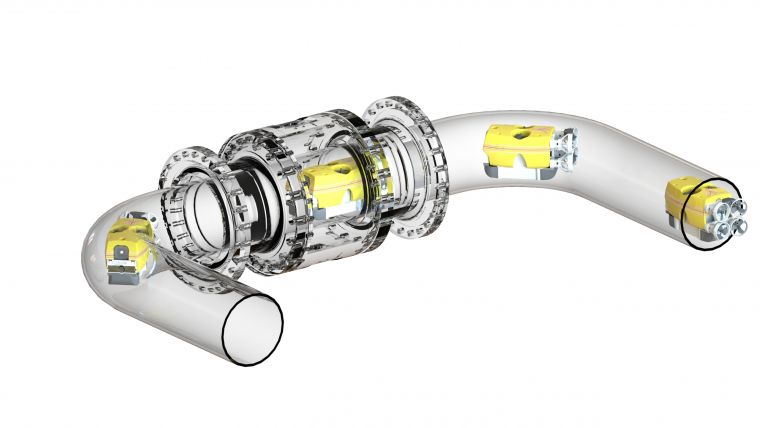ROV 'Mother Ship' Solves Decommissioning Challenge
Saab Seaeye customer Stinger Technology has developed an idea to penetrate the labyrinth inside offshore production tanks in search of environmental contaminates prior to decommissioning. The company has managed to squeeze an underwater robotic systems configuration loaded with sampling technology through a 150cm-square hatch to search a tank’s internal maze of baffles and navigate along 25.5cm-diameter pipe runs of curves and bends.
Stinger’s idea turned the compact Saab Seaeye Falcon into a ‘mother ship’ from which is launched an even smaller fly-out VideoRay and tiny fly-out Stinger Nano. The Norwegian company has dubbed the trio 'Mother', 'Daughter' and 'Little Sister'.
Busy ROV Family
With the market expecting 1,800 wells to be decommissioned over the next 10 years, in Norway and the UK alone, the new ‘little family’ is set to be busy. Importantly for offshore operators, is that sampling investigations on installations still in production, but planned for decommissioning, are not interrupted.
Measuring 1 x 0.5 x 0.6 metres in size, Stinger knew the Falcon could pass through the 1,50cm hatch and into the ‘nose tank’, even when fully configured, ready for launching the daughter and sister from their integrated tether management system on their extended sampling missions.
The entire Falcon mother ship configuration, with its fly-out 120m TMS, its docking station for fly-out daughter and sister, a subsea toolbox, tailor-made subsea interchangeable tools using manipulator, and docking-inclusive cleaning device in its tool basket – all fitted into a total system dimension of 1000x1000x850mm.
Self-developed Nano ROV
Saab Seaeye engineers were keen to assist in Stinger’s technological achievement, which included Stinger developing their own miniature robotic system in the form of the Nano - the smallest and most advanced plugin fly-out on the market.
Once into the tank and embarking upon the data-gathering mission, two operators work in tandem – one, piloting the Falcon, the other piloting the daughter or sister as they were operated just one at a time from the Falcon base station.
The VideoRay Stinger Nano and were equipped with a Tritech micro scanning sonar for their navigation where the Falcon relies on the BlueView Multibeam scanning sonar.
The VideoRay and Stinger Nano were fitted out with a range of tools including a deposit depth rule tool for measuring sediment and deposits on base and walls, a scraper tool for measuring the thin layer of hydrocarbon wax deposits on the tank wall and a scoop sampler. Included was a water quality sensor for measuring dissolved oxygen, temperature, conductivity, salinity, specific conductance, resistivity, pH and ORP. A bottle sampler with a manipulator operated release mechanism was also included and a camera to verify successful sample taking.

Value staying current with hydrography?
Stay on the map with our expertly curated newsletters.
We provide educational insights, industry updates, and inspiring stories from the world of hydrography to help you learn, grow, and navigate your field with confidence. Don't miss out - subscribe today and ensure you're always informed, educated, and inspired by the latest in hydrographic technology and research.
Choose your newsletter(s)
























